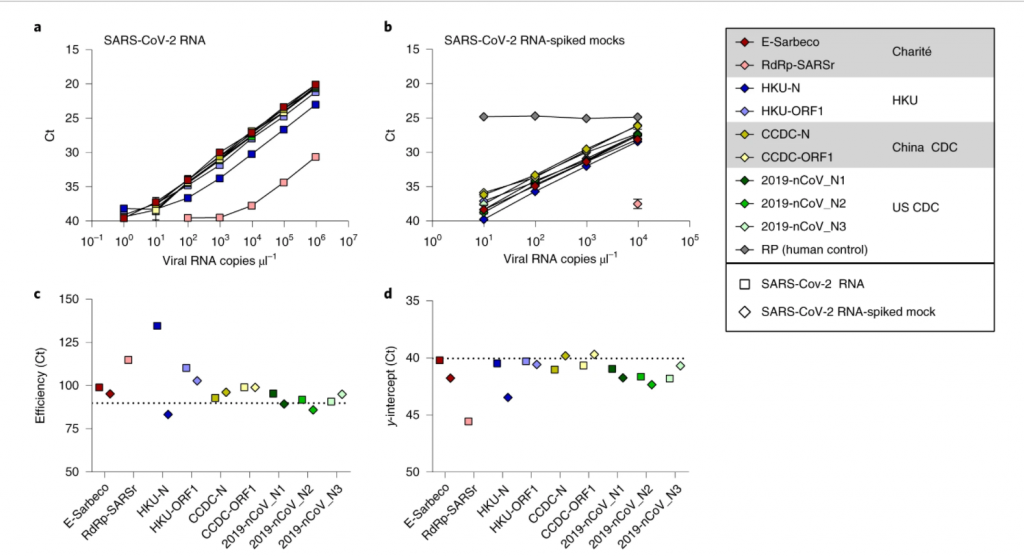Are COVID-19 Test Results from Different Diagnostic Tests Comparable?
Author: May Thongthum

As the number of COVID-19 cases keeps rising, many countries are keeping up with the diagnostic capacity to treat all infected individuals. Polymerase chain reaction (PCR) is the current standard method for COVID-19 diagnosis and currently there are several quantitative reverse transcription-PCR (RT-qPCR) assays being used. The critical need for accurate and rapid diagnostic assays prompt medical and clinical laboratories to question which assay they should adopt and whether the results from different diagnostic assays are comparable. BF Vogels and colleagues compared the analytical efficiencies and sensitivities of the primer-probe sets used in four commonly used SARS-CoV-2 RT qPCR. The selected studied assays were developed by China CDC, United States CDC, Charité Institute of Virology, Universitätsmedizin Berlin (Charité) and Hong Kong University (HKU). They only compared the results but not the assays themselves because each institution’s development process would have involved several different variables. The study results show that all primer-probe sets can be used to detect SARS-CoV-2 at 500 viral RNA copies per reaction (this information indicates the sensitivity of the assay), except for the assay developed by Charite. The reason could be attributed to a mismatch to circulating SARS-CoV-2 in the reverse primer. Moreover, the authors found no evidence for recent SARS-CoV-2 evolution decreasing the diagnostic assay’s sensitivity.
References:
Figure retrieved from Vogels, C.B.F., Brito, A.F., Wyllie, A.L. et al. Analytical sensitivity and efficiency comparisons of SARS-CoV-2 RT–qPCR primer–probe sets. Nat Microbiol (2020). https://doi.org/10.1038/s41564-020-0761-6
Article title: Analytical sensitivity and efficiency comparisons of SARS-CoV-2 RT–qPCR primer–probe sets https://www.nature.com/articles/s41564-020-0761-6